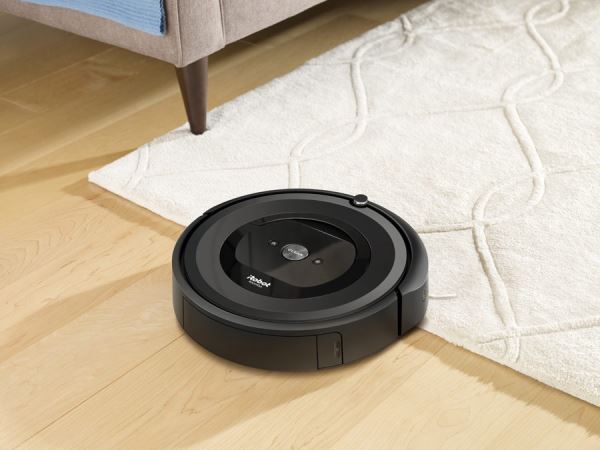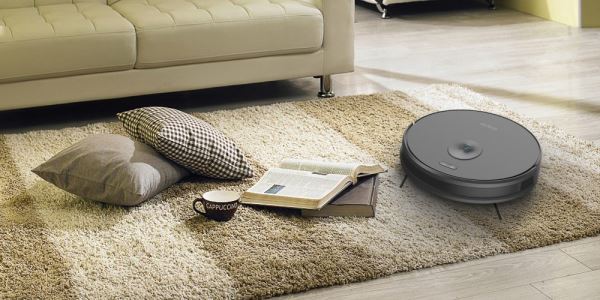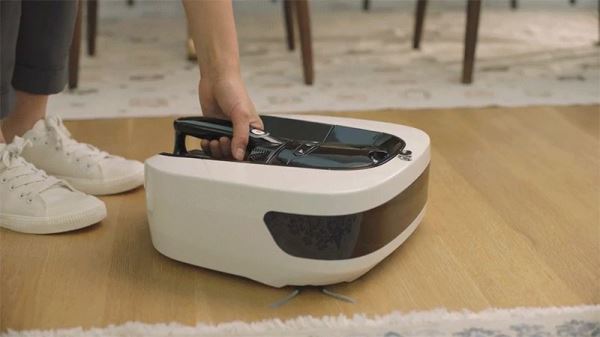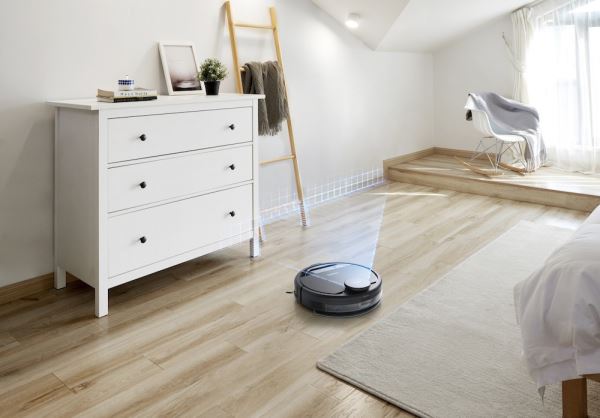The robot vacuum market is experiencing strong growth globally as consumers look to cut household chores and savour more leisure time.
Since iRobot unveiled Roomba, the world’s first domestic robotic vacuum cleaner more than 15 years ago, the technology has been taken to dizzy heights.
Roomba has paved the way for the introduction of floor-mopping robots, window-cleaning robots, swimming pool-cleaning robots and even gutter-cleaning robots.
Domestic robot vacuums can operate in the home autonomously – and most are controlled via mobile app.
That means you don’t have to stay at home to clean your floors – these smart bots can start the job on demand before returning to their recharging docking station.
The latest models can communicate and interact with connected homes, through either mobile device app support or voice-enabled commands via Amazon Alexa or Google Home speakers.
Connectivity with other devices via either smart home technology or Internet of Things devices will create new opportunities for robot manufacturers.
Floor cleaning robots are here to stay
According to US research firms, the “cleaning robot market”, which also includes lawn-mowing robots, pool-cleaning robots and window-cleaning robots, is expected to grow from US$2.1 billion last year to US$4.34 billion by 2023.
Some 31 million household robots were sold between 2016 and 2019 (with 96% of those in the vacuum and floor cleaning space), the International Federation of Robotics has revealed.
And for the next few years the market for robotics in personal and domestic applications will be dominated by robots cleaning floors and mowing the lawn, the IFR predicts.
The latest generation of robots has improved greatly from the early days – robots now have better suction strength, a variety of different brush options, edge-cleaning abilities, intelligent room mapping, smarter sensors, and advanced software features.

Market pioneer iRobot’s recently unveiled its latest model – e5 – taking the technology to the next level.
The e5 is the first iRobot model with a washable dust bin. A quick rinse is all it takes to remove leftover debris in the robot dust bin.
And the good news is it has all the smart home capabilities available at a mid-tier price range for iRobot. The Roomba e5 Wi-Fi Connected Robot Vacuum is available in Australia at RRP $999.
The edge-sweeping brush concentrates on edges and corners. At the same time, intelligent navigation and Dirt Detect technologies help the robot get around furniture and focus on areas that need it most.
The Roomba e5 is ideal for homes with pets for removing pet hair on floors and carpets.
The machine runs for up to 90 minutes before automatically docking and recharging.
Latest robo vacs on show at CES 2019
And at this year's Consumer Electronics Show (CES) in Las Vegas visitors were given a glimpse of the next generation of home robot vacs designed to make your life easier.
This included Ecovacs Robotics’ latest floor cleaning robot the Deebot OZMO 960.
This new model uses the company's all-new Artificial Intelligence and Visual Interpretation (AIVI) technology to help it to avoid household obstacles such as charging cables and orphan socks.
Through the combination of Ecovacs AIVI and spatial recognition, the DEEBOT OZMO 960 can survey the landscape and automatically avoid such obstacles.
Also, Ecovacs AIVI has been designed to adapt to different home environments, allowing the robot to create an optimized navigation route while cleaning. In doing so, it saves both time and energy.
Air purifying robot
Besides the Deebot OZMO 960, Ecovacs is using CES 2019 to highlight its new air purifying robot, the ATMOBOT. The company's window cleaning robot, the WINBOT X, is also on display.
The ATMOBOT uses sensors to select a purification spot in each area automatically. Then, it begins purifying, moving to its next spot when the air quality reaches adequate levels.
The WINBOT X has been designed for those who want to enjoy a better view from their windows, without the hassle of cleaning the windows themselves.
All Deebots are compatible with both Google Home and Amazon Echo. In doing so, you can make them clean your home just by tapping on your smartphone or using voice control.
The Deebot OZMO 960 goes on sale later this year.
Budget smart home robot vacuum
Also at CES, California based tech startup Trifo launched Ironpie, a US$299 smart home robot vacuum that it says “outperforms competitive models and is available at a lower price point.”
Using a combination of sensors, computer vision, and artificial intelligence software algorithms, Trifo said Ironpie can clean 10 percent more efficiently than other robot vacuums, by identifying areas that haven’t been cleaned, or by avoiding redundancy – areas that get re-cleaned.
Ironpie’s multiple sensors provide effectiveness in brighter or low-lit environments, and obstacle avoidance features help the robot protect a user’s furniture.
“Ironpie represents a new generation of home robots, a smart robot vacuum that cleans faster, protects furniture better, is controllable from anywhere, and with a host of features that improve on the original home vacuum concept,” said Zhe Zhang, Trifo’s CEO.
Ambitious sales target
Zhang said Ironpie is the initial product for the startup, which was founded in 2016. For its first two years, Trifo was developing on integrating the hardware and software system with sensing, perception, and decision-making capabilities.
Late in 2018, the company raised $11 million in new funding to further develop its systems for the robotic vacuum market.
Ironpie is the first step in a company vision that sees the robot vacuum market as the starting point for a next-generation home robot, Zhang said.
Trifo plans to integrate Amazon Alexa and Google Home voice assistant features in the first half of 2019.
“Our target is to ship 400,000 units in 2019,” Zhang said.
But don’t expect to see the Ironpie budget vac in Australia anytime soon.
The company will initially focus on selling Ironpie in the US, Europe, and China, with expansion to Japan, Korea, Taiwan and other markets later this year.
Two vacuums in one
Another robovac attracting plenty of attention at CES is the Coral One.
Unlike a Roomba or other robot vacuums, the Coral One has a detachable component that allows for manual vacuuming of elevated or hard-to-reach surfaces.
This two-in-one vac has an astonishing array of features. It’s easy to use and reasonably priced at US$599.
The downside is its bigger than most other robovacs on the market and has no app.
That means you can't schedule cleanings or find the vacuum if it gets lost.
The Coral One was launched in the US late last year and will be rolled out into selected international markets in 2019.


